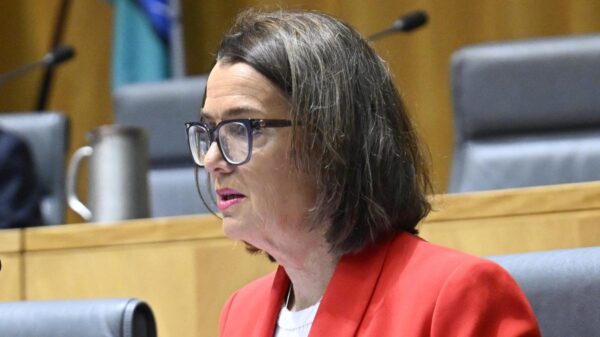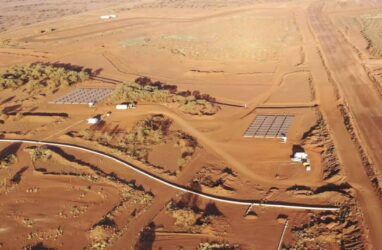UPDATE: Australia’s richest person, Gina Rinehart, has achieved a significant milestone in renewable energy despite her opposition to net zero policies. Hancock Iron Ore, the powerhouse behind much of Rinehart’s wealth, has successfully installed solar and battery systems that now provide 55% of energy at its mining operations in the Pilbara region.
In a groundbreaking move, Hancock Iron Ore revealed the deployment of three solar and battery hybrid systems aimed at enhancing its dewatering operations. These systems combine 750 kW of solar power using the innovative 5B Maverick technology and 1.68 MWh of battery storage. The installations, while small-scale, are projected to save up to 250,000 litres of diesel annually, marking a significant step towards sustainability in mining.
Pacific Energy, the firm responsible for the installations, stated, “This was our first time deploying the 5B Maverick Solar Array for bore pump applications. The rapid-deploy, transportable design made it perfect for this remote mining environment.” The integration of Variable Speed Drives optimizes pump efficiency and connects seamlessly to Hancock Iron Ore’s existing SCADA platform for real-time monitoring.
Hancock Iron Ore further emphasized the operational benefits in a LinkedIn post, noting, “The solar power system’s design will offset up to 55% of the required energy, with the excess generation stored in battery systems for later use.” The company anticipates increased productivity and reduced maintenance hours due to this initiative, alongside significant diesel savings.
However, the scale of Hancock’s renewable projects pales compared to peers like Fortescue Metals, BHP, and Rio Tinto, who have initiated solar farms exceeding 100 MW. Fortescue aims for “real zero” emissions by 2030, contrasting Rinehart’s vocal criticism of net zero targets, which she describes as “a magic pudding” and unattainable.
Rinehart has previously expressed her disdain for solar energy, calling panels an “eyesore.” In her speeches, she emphasized the need for reliable energy sources in manufacturing sectors and warned against the economic burdens of net zero policies. “The truth hiders are not telling us… the trillion plus of taxpayers’ dollars net zero will cost,” she stated, highlighting her opposition to the push for sustainable energy.
Despite the controversy surrounding Rinehart’s stance on renewables, Hancock Iron Ore’s recent initiatives indicate a potential shift towards more sustainable practices. As reported last year, Rinehart’s companies sought permission to construct a 40 MW solar facility at their Mulga Downs site, signaling a cautious embrace of renewable technology.
The success of these installations has drawn attention from industry peers, with offers for improved systems already circulating. “AFB has a better off-grid solution at 90% diesel reduction,” commented Mark Reynolds, chairman of AFB, which specializes in hybrid systems using flow battery technology.
As Hancock Iron Ore continues to explore renewable options, the mining sector watches closely. The implications for operational efficiency, cost savings, and environmental impact are becoming increasingly significant in today’s energy landscape.
Stay tuned for updates on Hancock Iron Ore’s ongoing renewable energy initiatives and their impact on the mining industry.































































